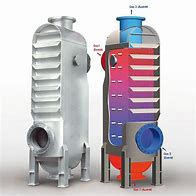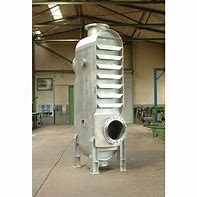Gas-to-Gas heat exchanger

Gas-to-Gas heat exchanger

Gas-to-Gas heat exchanger
Gas-to-Gas heat exchanger Executions as bare-tube, finned-tube or pillow-plate type heat exchangers as well as circulation systems for heat recovery applications can be provided
Depending on the grade of contamination of the gaseous media, we propose you the optimal solution regarding cost-efficiency, cleanability and durability for your gas-to-gas heat exchange request
Main Features
- Gas-to-gas heat exchanger solution, suitable for aggressive gaseous media
- Executions as bare-tube, finned-tube or pillow-plate type heat exchangers depending on the grade of contamination of the gaseous media can be provided
- Ability to handle dust or particle-loaded air or gases, which normally get stucked inside exchangers with closed fins
- Upon request, a CIP-system can be installed into this heat exchanger
Characteristics
- Material: stainless steel or higher alloy materials
- Free distance between the plates on either side is adjustable to fit the duty
- Overall size of each unit can vary from small to very large depending on the space available on site
- Easy to maintain and clean
A gas to gas heat exchanger, such as use in a HiPco system, and an improved system and process by which gas from the gas to gas heat exchanger and the gaseous catalyst carrier stream can be introduced into the HiPco core reactor
Heat-exchange apparatus having stationary tubular conduit assemblies for both heat-exchange media, the media being in contact with different sides of a conduit wall the conduits being helically coiled
A gas-to-gas heat exchanger is formed of a multiplicity of identical vacuum molded plastics sheets which are stacked together. The sheets are hexagonal in shape and are each provided with corrugations) in respective end regions and corrugations in an intermediate region. Selected edges of adjacent are sealed together so as to define gas inlets and gas outlets (for the heat exchange gases at different edges of the stack of sheets. The corrugations and orientation of the sheets are such as to define cross-current flow heat exchange portions in the regions of the inlets and outlets and an intermediate counter-current flow heat exchange portion.
